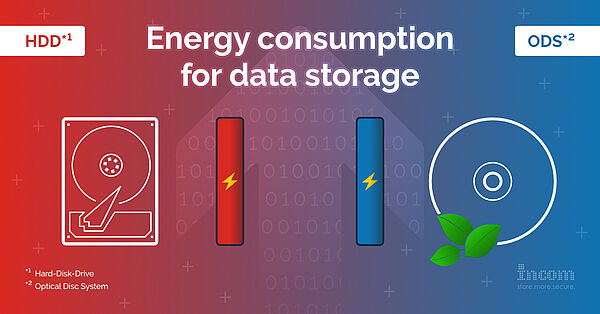Our high availability has a price: it costs energy, a lot of energy. The cryptocurrency Bitcoin alone consumes 25 % of Germany's annual electricity demand. Our hunger for data is also causing individual data centres to sprout, which do justice to the electricity consumption of an entire small town - with no end in sight. It is true that IT systems are also becoming more and more energy-efficient, but the savings are swallowed up by the exponentially growing storage requirements of ever more complex applications.
As a rule, we still store our data on hard disks - whether locally, in the company's own server room or in the data centre in the cloud. What all these storage locations have in common - the hard disks rotate, consume electricity, generate heat that has to be cooled down again by air-conditioning systems, which is already costly in smaller local server rooms. Even if flash memories already offer a small thermal advantage here, they are still capacitively limited and more expensive than the good old hard disk.
Constantly rising electricity prices, a foreseeable and constantly increasing CO² tax and, last but not least, the ecological conscience demand a balancing act between high availability, data security and energy consumption. Many data centre operators are taking this into account by using more and more energy-efficient hardware and cooling technology, but efficient data management can also contribute significantly to energy efficiency.
Whether through the data compression of modern object storage systems or the outsourcing of COLD data to secure and energy-efficient optical storage systems, there are a number of levers that can be used to redesign storage environments to be more secure and at the same time more energy-efficient. An optical library consumes only a few watts in idle mode and generates only negligible heat, which does not change significantly under load when data is being written or read.
